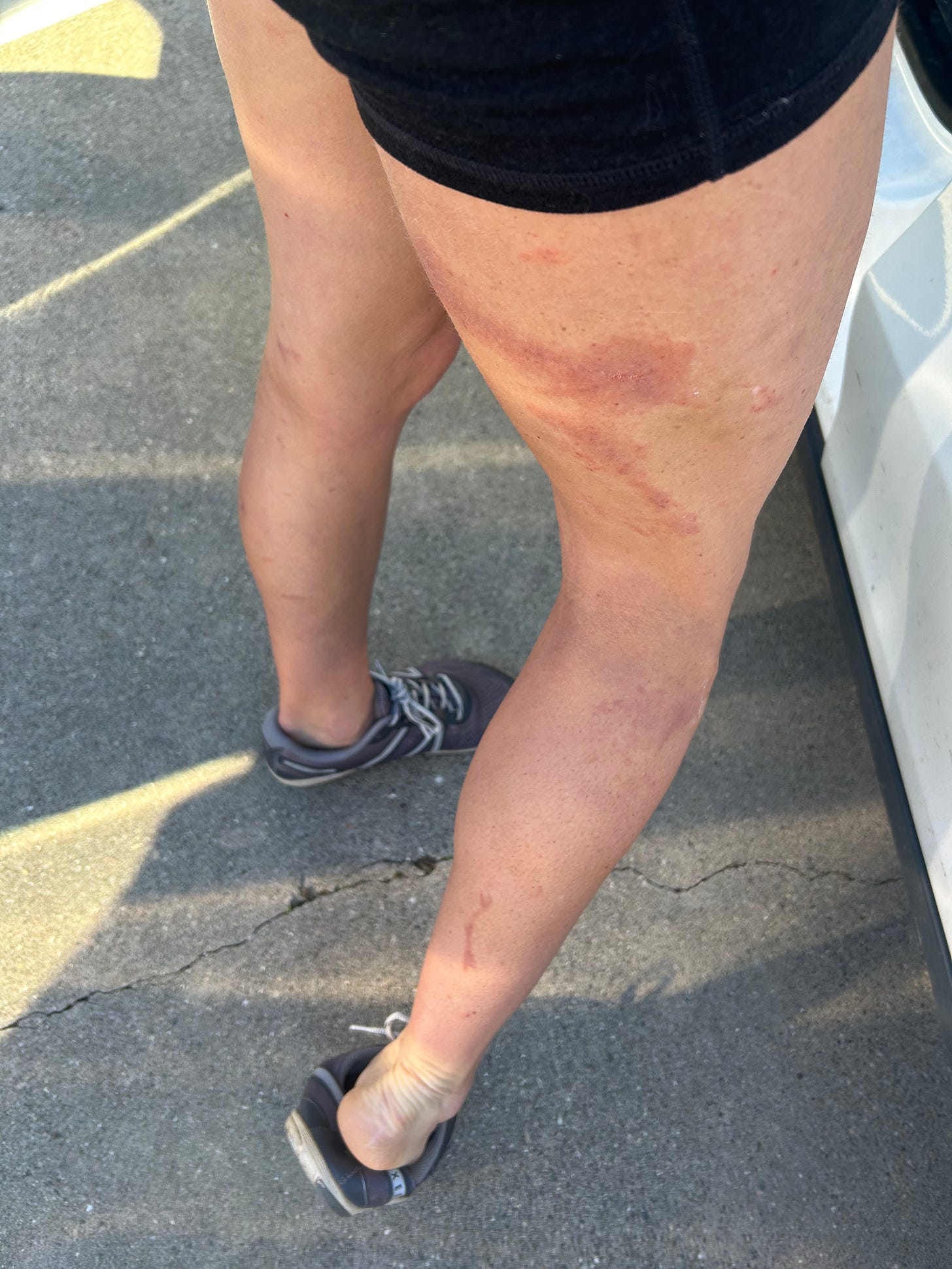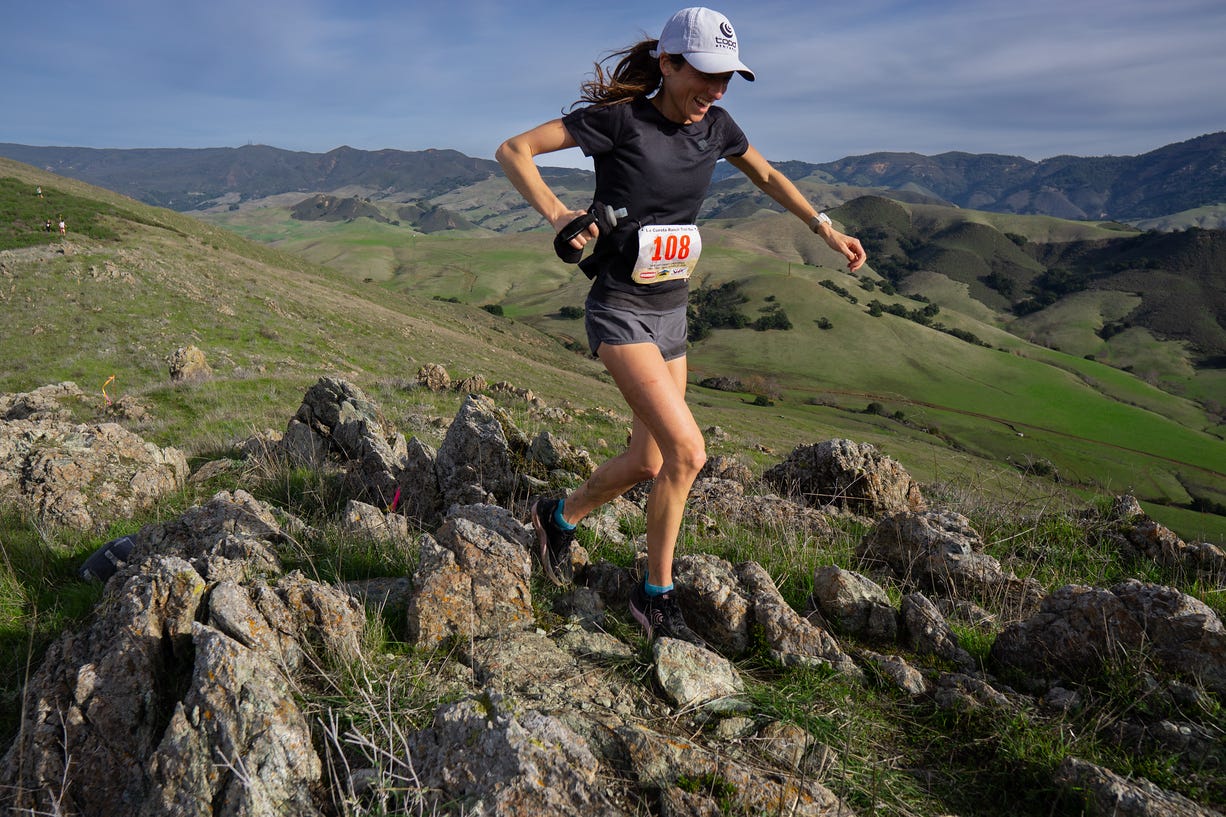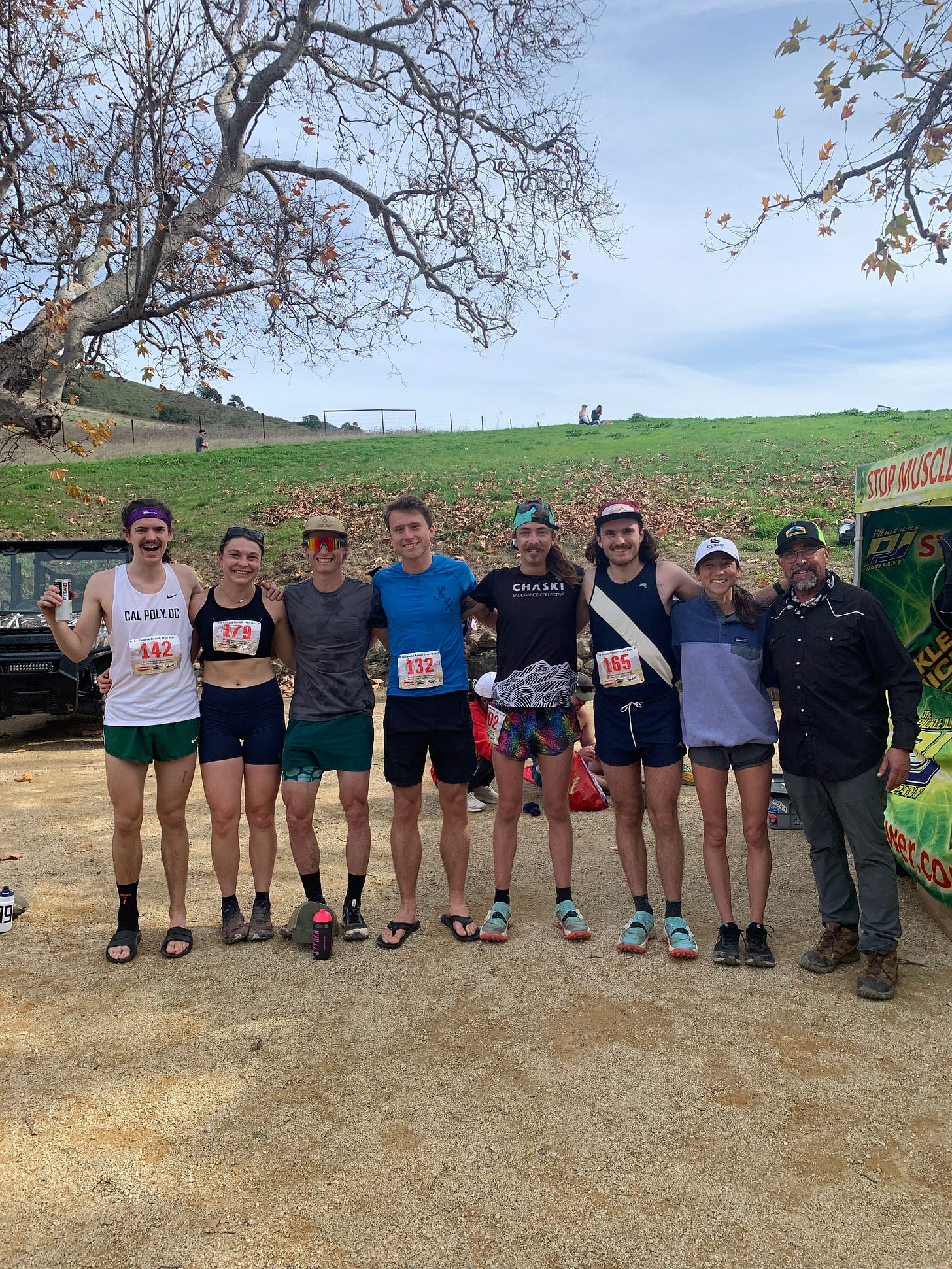January continues to test my fortitude this year and I’d say that things have mostly continued to go downhill since my last post about deciding not to run HURT 100. We lost two of our little guys—Edward the rat and Simi the guinea pig—and while on a weekend trip to the San Mateo coastline, I (unknowingly) managed to come in contact with poison oak. Three days later, it showed up in the form of a very itchy, red rash that streaked across the backs of my legs. The first time I contacted poison oak, last April, I got by with a homemade paste made of bentonite clay and baking soda. This time I elected to go to Urgent Care for a topical medication because the itchiness was preventing me from doing much else besides thinking about needing to scratch and the lack of sleep was only making things worse.

Jumping into a race this past weekend wasn’t at the top of my mind last Friday but I’m certainly happy I did.
La Cuesta Ranch Trail Runs take place a short 10-minute drive from our home in San Luis Obispo, California, and one of the reasons that this event is special is the lack of access any time but race day. The race takes place on the Miossi Brothers La Cuesta Ranch, a sprawling cattle ranch (and occasional wedding venue) abutting highway 101 and Cuesta Canyon. The land is private, so having the opportunity to run the trails and fire roads that weave across the area is special. And, knowing Luis Escobar is the Race Director, I was in a for a fun and laid-back time.
The race started at 8 a.m. and included a 10K, 25K and 50K race. I started near the front, hoping to stay within reach of some local superstar runners like Alex Parker, Chris Andrews and, of course, my own husband, Nickademus de la Rosa. I hadn’t tapered into the race, thinking of it instead as a training run in preparation for a 50K six weeks away. In fact, I hadn’t even looked at the course profile and didn’t know what to expect besides mud.
The first mile was fast, too fast, and I reeled it in after following the pink flags up fire road and onto grass still wet from the recent rain. In some ways, the course reminded me of fell running, which Wikipedia describes as: “the sport of running and racing, off-road, over upland country where the gradient climbed is a significant component of the difficulty. The name arises from the origins of the English sport on the fells of northern Britain, especially those in the Lake District.” Rather than British hillsides, however, we were running across bright green cattle fields that dipped into small streams with live oaks on either side. Since the 10K, 25K and 50K runners had all started together, it was hard to tell who was running which race until mile 3 or so when the 10K yellow loop diverged from the 25K/50K pink loop. Here, I found myself running between Nick Allen (who would go onto win the 50K) and Joey Flora (who was also running the 50K).
My legs felt solidly okay the whole race—not great, not terrible. Sometimes I’ll have days where I’m not expecting to feel good and as soon as the race begins, something clicks and I’m flowing. This was just a steady grind.
At mile 7 or 8, the course suddenly veered up a steep, rocky hillside. Luckily this sort of terrain plays to my advantage, particularly uphill, and I found myself passing a few runners. What I wasn’t expecting, however, was the descent—straight down and far steeper than anything I’ve ever seen before and, of course, more technical even than the ascent. This, I remembered, was a true Luis Escobar race.

At mile 10, we were routed back through to the start/finish where we quickly checked in with volunteers before heading out for the 10K loop, following the yellow markers along the way.
By this point, I realized that we’d be doing the technical ridge part twice so I mentally prepared myself for that and ate the gel I’d brought (in hindsight, I should have brought a lot more than just one gel but in my defense I’m not used to running these *shorter* distances.)
The final climb and descent was tiring and I felt all 4,200 feet of elevation gain as the “trail” gave way to road for the final mile or so. I tend to have some reserve at the end of races for a final kick, but my legs just wouldn’t turn over. I finished first place in about 2:42 and, which was thirty minutes longer than I predicted this race would take—which, again, speaks more to the fact that I did not do my research about this course! I wouldn’t change a thing though. Sometimes it’s more fun to not know what you’re getting into. Nick finished about 10 minutes in front of me in 4th place in 2:30, which is a solid time for him!

With that said, some reasons to run a local race:
Support your local trail race director
Thanks to all that unfolded around UTMB and Whistler Alpine Meadows earlier this year, I probably don’t need to harp on the importance of supporting your local trail running community. (If you don’t know what I’m referring to, Gary Robbins summarizes it well here.) Signing up and running a local race (or volunteering if you’d rather not race) is a great way to do that. Luis Escobar of All We Do Is Run has been putting on incredible races along the central coast for years and I continue to be happy that my first 50K was Born to Run—the whole experience was so fun, I’m certain it contributed to my decision to run a second ultramarathon, then a third, and now, ten years later, I’m fifty races deep.
Less expensive and more climate friendly travel
I have several bucket list races that will require me to spend a lot of money on travel/flight costs, accommodations, meals out, etc. How special is it when you can wake up in your own bed and be at the start of the race within ten minutes? Sometimes we pay more for pet sitting than we do for the cost of a trip, so it’s also helpful to be able to run a race that doesn’t require us to board our dogs or have someone look after our cats and small animals. Plus, it’s nice to lessen my carbon footprint by building out my calendar with more domestic races and being selective about which races I travel to abroad.
Grow your trail running community
Nick and I are still new to San Luis Obispo, but thanks in part to various running clubs in the area (San Luis Obispo Mountain Runners and San Luis Distance Club) we already know more runners here than we did during our 3 years in the Sedona/Flagstaff area. Running local races and seeing the same faces can help you feel more connected to your community and also give you the opportunity to find new training partners or friends.
Support your local economy
This race wouldn’t happen without the cooperation of the Miossis and their family farm. Showing public support for agricultural lands and public lands can help ensure they stay available as spaces to recreate. The closer to home you run, the more you support your own economy considering that local races often partner with local businesses and eateries.
Take off the pressure
Sometimes the more extensive the travel plans, the more pressure I find myself experiencing on race day. Sticking to local races that keep planning to a minimum can allow you to enjoy the race without additional stress. This also allows you to add more races to the calendar, perhaps even as training races in the lead up to your bigger goal race. I count this most recent 25K as a training race in preparation for March’s 50K that will require travel.
I hope you consider signing up for a local race, whether that’s a 5K or a 100-mile race!





Jade I’m sad you lost your fur babies! It’s so hard💔.
I love this idea of local races and running groups. It’s part of my NY resolutions. More local races with a smaller carbon foot print. Thanks for the great read!! I’m planning on running the J tree traverse in April ( not for an FKT, l) just for the joy of it. Happy spring ish running season.
Congrats Jade, and thanks for writing about Luis Escobar’s events. I had sort of forgotten about them, and I’m glad BTR and Nine Trails are still going. It makes me want to make time to run in the SB hills. Coincidentally I plant to write about fave races & RDs tomorrow in my newsletter so I’ll link to this!